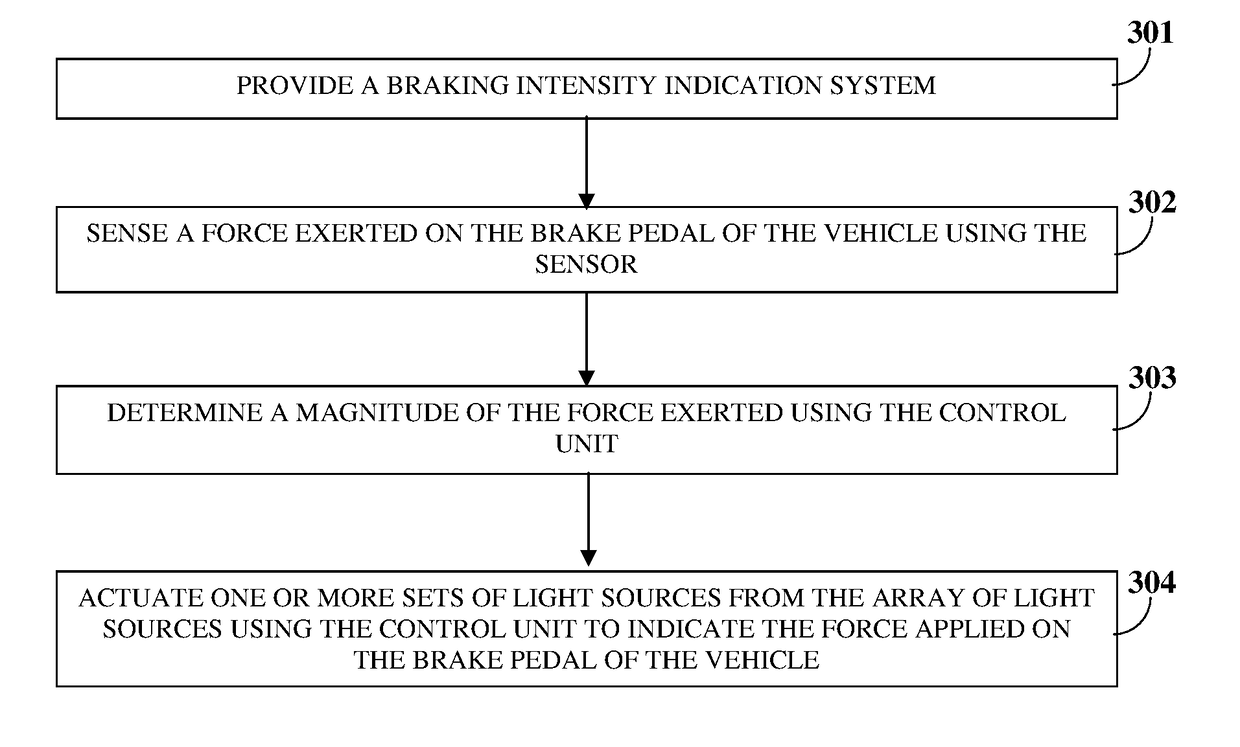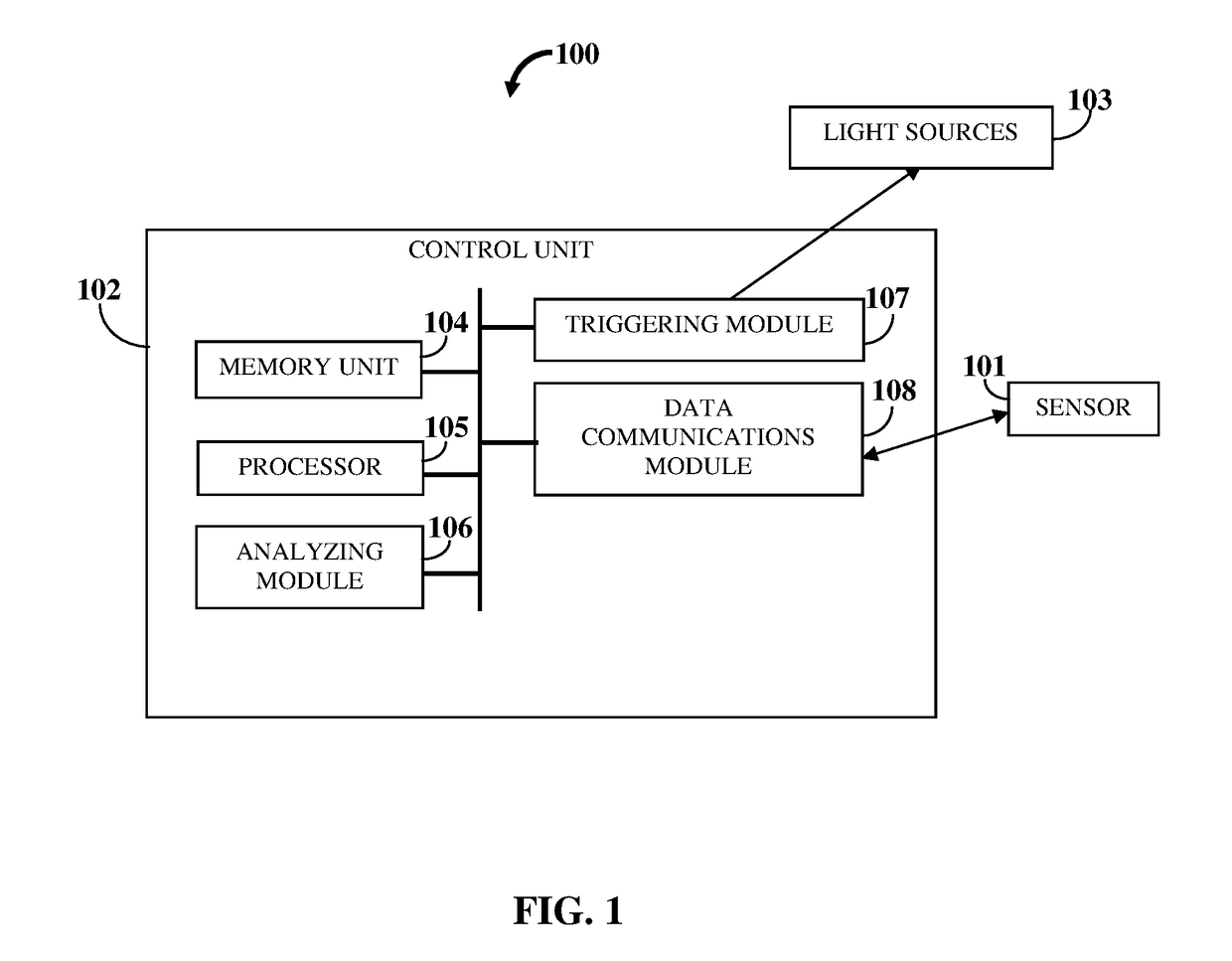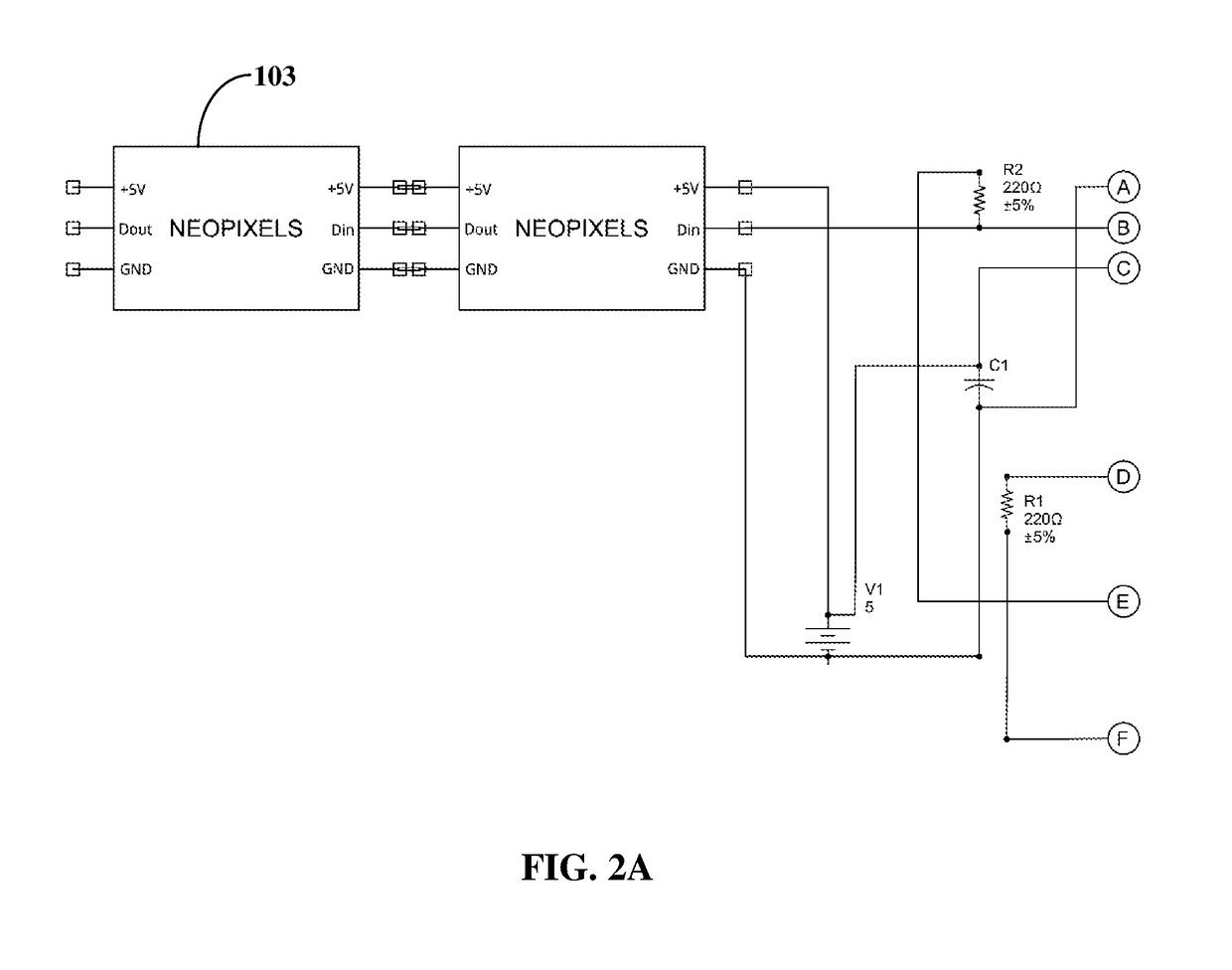Braking intensity indication system
a technology of intensity indication and brake light, which is applied in the direction of brake safety systems, brake systems, transportation and packaging, etc., can solve the problems of increasing production costs, increasing the cost to the end consumer, and increasing the travel of the brake pedal further, so as to achieve the effect of minimal customization or calibration
- Summary
- Abstract
- Description
- Claims
- Application Information
AI Technical Summary
Benefits of technology
Problems solved by technology
Method used
Image
Examples
Embodiment Construction
[0012]FIG. 1 exemplarily illustrates a schematic diagram of a braking intensity indication system 100. The braking intensity indication system 100 indicates a force applied on a brake pedal of a vehicle comprises a sensor 101, a control unit 102, and an array of light sources 103. The sensor 101 is mounted on the brake pedal for generating sensor data variables based on the force exerted on the brake pedal. The control unit 102 for receiving the generated sensor data variables from the sensor 101. The control unit 102 is configured to analyze the received sensor data variables. The array of light sources 103 is in electrical communication with the control unit 102. The control unit 102 actuates one or more sets of light sources 103 from the array of light sources 103 for indicating the force applied on the brake pedal of the vehicle. The control unit 102, is for example, a micro controller, etc., that is programmed to translate changes in resistance applied to the sensor 101 mounted...
PUM
 Login to View More
Login to View More Abstract
Description
Claims
Application Information
 Login to View More
Login to View More - R&D
- Intellectual Property
- Life Sciences
- Materials
- Tech Scout
- Unparalleled Data Quality
- Higher Quality Content
- 60% Fewer Hallucinations
Browse by: Latest US Patents, China's latest patents, Technical Efficacy Thesaurus, Application Domain, Technology Topic, Popular Technical Reports.
© 2025 PatSnap. All rights reserved.Legal|Privacy policy|Modern Slavery Act Transparency Statement|Sitemap|About US| Contact US: help@patsnap.com



